Growing cannabis can feel like an inside look into the world of plants, and it’s more accessible than you might think!
Understanding the basics of cannabis cultivation is key for anyone looking to explore this rewarding hobby. At its simplest, cannabis cultivation involves nurturing the plants from seed to harvest, ensuring they thrive in their environment.
One of the first steps is recognizing the different types of cannabis plants, primarily autoflower vs photoperiod strains. Autoflower strains transition from vegetative growth to flowering automatically with age, making them perfect for beginners or those wanting quicker yields. On the other hand, photoperiod strains rely on light cycles to bloom, offering growers more control over the growth process.
In this blog, we’ll dive deeper into these two plant types, discussing their unique traits and benefits. We’ll also cover essential growing tips, common challenges, and how to create the perfect nurturing environment. So, whether you’re a curious newbie or a seasoned grower, there’s plenty to explore in the world of cannabis cultivation!
What Are Autoflowering Strains?
Autoflowering cannabis strains are a game-changer for growers. Unlike their photoperiod counterparts, which depend on specific light schedules to flower, autoflowering strains automatically transition to the flowering stage after a certain period, regardless of light exposure.
This is all thanks to the genetics stemming from the Cannabis ruderalis species, which adapted to short growing seasons in harsh climates. Over the years, breeders have honed these traits, giving us the handy autoflowering varieties we see today.
As a result, growers can enjoy a simple, straightforward way to cultivate cannabis, making it perfect for those looking to dip their toes into the hobby.
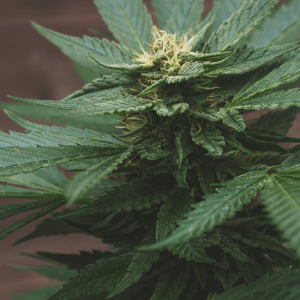
The Benefits of Autoflowering Strains
One of the standout advantages of autoflowering strains is their quick growth cycle. Typically, these plants can go from seed to harvest in just 8 to 10 weeks, allowing for a speedy turnaround. This fast pace means that even beginners can enjoy the satisfaction of growing their own cannabis without the long wait. Plus, since they flower automatically, there’s less guesswork involved—ideal for those just starting out!
Another fantastic perk is the potential for multiple harvests in a single season. With the right conditions, growers can plant successive crops, maximizing their yield and making the most of their outdoor space. So, if you’re keen on growing cannabis but want to keep things simple and efficient, autoflowering strains might just be the perfect fit!
Challenges of Autoflowering Strains
While autoflowering strains have plenty of perks, they come with their own set of challenges that growers should keep in mind. One significant issue is that they often produce a limited yield compared to photoperiod cannabis strains. Since autoflowers grow quickly and go to harvest in about 8 to 10 weeks, they don’t have as much time to bulk up, meaning you’ll typically harvest less per plant. This can be a bummer for those aiming for bigger crops.
Another challenge is the reduced control over the growth cycle. With photoperiod strains, you can manipulate light exposure to extend the vegetative phase and encourage bigger plants before they flower. However, with autos, this flexibility is limited, as their flowering phase is determined by age rather than light cycles.
Lastly, autoflowering strains can be quite sensitive to environmental changes. They tend to be less forgiving of stress factors like temperature fluctuations or nutrient imbalances, which can affect their growth and yield. For new growers or those in less-than-ideal conditions, this sensitivity could lead to disappointment.
Balancing these challenges with the ease of care can be tricky, but with a bit of practice, it’s certainly manageable!
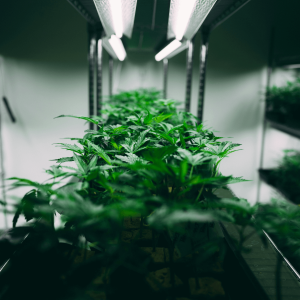
What Are Photoperiod Strains?
Photoperiod strains are a classic choice for cannabis growers looking to harness the power of light cycles to influence flowering.
Essentially, these photoperiod plants require specific light schedules to switch from the vegetative phase to flowering. When exposed to longer periods of light, they stay in the veg stage, but once the light exposure is reduced, they know it’s time to bloom.
This characteristic can be traced back to the plant’s adaptation to seasonal changes, allowing it to thrive in various climates. As cultivation techniques evolved, breeders selectively enhanced these traits, resulting in the photoperiod strains we know today.
The Benefits of Photoperiod Strains
One of the main draws of photoperiod cannabis plants is their impressive yield potential. Because these plants have the luxury of longer veg time, they can develop more substantial biomass, leading to bigger harvests.
In addition to increased yields, growers have greater control over the growth phases of photoperiod plants. With the ability to manipulate light exposure, you can extend the vegetative stage to encourage even larger plants before they enter flowering. This means you can tailor your growth strategy to suit your space and preferences, making it ideal for those who enjoy a hands-on approach.
Lastly, photoperiod strains can develop more robust photoperiod plants, as they typically have a longer time to grow and strengthen their structure, resulting in hardier crops that can better withstand the challenges of cultivation.
Challenges of Photoperiod Strains
However, growing photoperiod strains isn’t without its challenges. One key downside is the longer growth cycle they require, which can be a test of patience, especially for those eager to see results. It’s not just about waiting; these plants often demand a bit more knowledge and experience to navigate their growth phases effectively.
If you’re new to growing, you might find yourself overwhelmed by the complexities of light schedules and cannabis plant care. Furthermore, their dependence on light cycles means that any hiccups in your lighting setup can mess with the whole process. A missed light cycle can delay flowering or negatively impact your yield, making it crucial to stay on top of your setup and conditions.
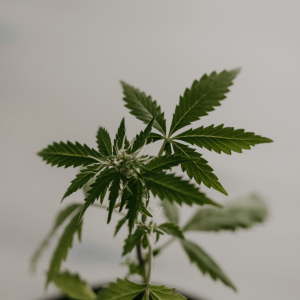
Growth Cycle Comparison
When it comes to the growth cycles of autoflowering and photoperiod strains, there’s a notable difference that can really impact your gardening approach. Autoflowering strains typically move from seed to harvest in about 8 to 10 weeks, making their entire process quite speedy. They go through a short vegetative stage, lasting just a couple of weeks, before quickly jumping into the flowering phase, regardless of light exposure. This rapid growth means growers can enjoy multiple harvests in a single season, tapping into summer’s warmth and daylight.
On the flip side, photoperiod strains take their sweet time, usually requiring several months to reach harvest. They spend a more extended period in the vegetative stage, which can last anywhere from a few weeks to a couple of months, allowing for bigger, sturdier plants. Flowering kicks in once the light schedule changes, usually with longer nights as summer transitions to fall.
Seasonal changes play a crucial role here, too. Autoflowering strains are more adaptable to unpredictable climates, thriving in shorter growing seasons, while photoperiod strains are best suited for growers who can wisely navigate the changing seasons and control light exposure. Each type has its charm, so choose based on your goals and local conditions!
Yield and Potency Comparison
When it comes to yield, autoflowering and photoperiod strains have their strengths and weaknesses. Autoflowering strains typically produce lower yields, averaging around 1–4 ounces per plant, due to their quicker life cycle and limited veg time. This can be a bit of a letdown if you’re aiming to fill your jars with a hearty stash. On the other hand, photoperiod strains shine in the yield department, often giving you 2–8 ounces or even more per photoperiod plant, thanks to their longer time in the vegetative phase and the opportunity to cultivate larger plants.
Now, let’s talk potency! Photoperiod strains tend to pack a stronger punch, often reaching THC levels of 15% to 30%, depending on the variety and growing conditions. Autoflowers usually fall in the 10% to 20% range. For those looking for a more robust experience, photoperiods might be your go-to. However, it’s worth noting that many growers successfully enhance autoflower potency through careful breeding and nurturing.
If you’re a grower aiming for high potency, focus on selecting high-THC genetics and closely monitoring factors like nutrient levels, light exposure, and harvesting timing. These elements can significantly influence the final product’s strength, helping you achieve that perfect balance between yield and quality.
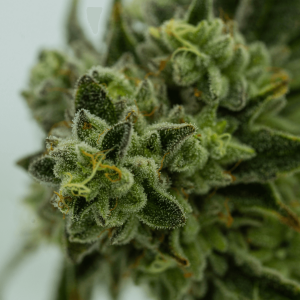
Ideal Growing Conditions for Autoflower vs Photoperiod
When it comes to setting the stage for your cannabis plants, understanding the ideal growing conditions for both autoflower and photoperiod strains is essential.
For autoflowering strains, they thrive in a well-draining soil mix rich in nutrients, allowing for healthy root development. They typically enjoy a light cycle of 18-24 hours, which not only simulates their natural habitat but also promotes vigorous growth. For photoperiod strains, a similar high-quality soil is crucial, but these plants prefer a light schedule of 18 hours during the vegetative phase, switching to 12 hours of light and 12 hours of darkness to trigger flowering.
Beginners should focus on creating stable environments, keeping temperature and humidity levels in check (ideally around 70-80°F during the day) and ensuring proper airflow. Additionally, both strains benefit from the right nutrients, so checking for a balanced NPK (Nitrogen, Phosphorus, Potassium) ratio tailored for each growth phase can go a long way.
Best Practices for Growing Autoflowering Strains
To maximize your success with autoflowering strains, starting with good genetics is key. Look for seeds from reputable breeders known for quality and stability. Once you’ve selected your seeds, employing techniques like LST (Low-Stress Training) can help increase yields by allowing more light to reach the lower buds.
Nutrient-wise, focus on using a light feeding schedule, as autoflowers are generally less nutrient-dependent than their photoperiod counterparts.
Common mistakes to avoid include overwatering, which can lead to root rot, and neglecting light exposure; even though they can handle varying light conditions, a solid 18-24 hours of light can boost growth.
As they grow fast, it’s also important to keep an eye on pH levels, typically between 6.0 to 7.0, to ensure nutrient absorption isn’t hindered. With these tips in mind, you’re on your way to cultivating healthy, thriving autoflowering plants!
Best Practices for Growing Photoperiod Strains
When it comes to photoperiod strains, a bit of patience and attention can go a long way in enhancing your harvest. Start by choosing strong genetics from reputable seed banks, as quality seeds provide a solid foundation for your growing journey.
One key aspect of photoperiod growing is light schedule management. During the vegetative phase, maintain an 18-hour light cycle to encourage healthy growth. As plants start flowering, switch to a 12-hour light and 12-hour dark cycle to properly trigger bud development. Consistency is crucial, so ensure you’re diligent about sticking to this schedule.
Training techniques can also play a big role in improving your yield. Methods like topping and low-stress training (LST) promote bushier plants with multiple main colas, allowing more light to penetrate lower buds. This can maximize the overall yield while promoting even development.
Additionally, keeping an eye on environmental conditions—like temperature, humidity, and ventilation—will help create an optimal growth atmosphere. By balancing these practices with proper nutrient management, you’ll set yourself up for a successful season, yielding plants that are both plentiful and potent.
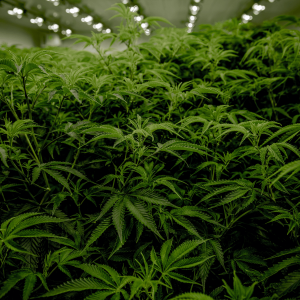
Conclusion: Which is Right for You?
Deciding between autoflowering and photoperiod strains really comes down to your personal growing experience and goals. Autoflowering strains are perfect for beginners or those with limited space and time—they’re adaptable, quicker to flower, and require less light management.
On the flip side, if you’re a seasoned grower seeking high yields and potent results, photoperiod strains might be your best bet. They need a little more TLC in terms of light cycles and growing conditions, but the rewards can be substantial.
If you’re curious, don’t hesitate to explore both types! Each has unique traits that cater to different preferences, and experimenting can deepen your appreciation for cannabis cultivation. Whichever you choose, embracing the journey of growing plants is sure to be a fulfilling experience!
Frequently Asked Questions
1. Are autoflowers better than photoperiod?
It really depends on what you’re looking for! Autoflowers are great for beginners or those who want a quicker turnaround since they flower automatically and are less demanding with light schedules.
On the other hand, if you have the time and knowledge to manage light cycles, it could be wise to grow photoperiod plants as they typically offer higher yields and more potent results.
2. Are autoflowers as potent as photos?
While autoflower strains can be quite potent, photoperiod strains generally have the edge when it comes to maximum THC levels. Autoflowers usually fall within a lower potency range, but many growers have successfully enhanced their potency through careful breeding and cultivation practices.
3. Is autoflower less potent?
In many cases, yes, autoflowers are generally less potent than photoperiod strains. However, this doesn’t mean there aren’t strong autoflower varieties available. You can still find some that pack a decent punch, especially if you’re focused on selecting high-quality genetics.
4. What are the cons of autoflower?
One downside of autoflowers is that they typically yield less than photoperiod strains because of their shorter life cycle. Additionally, their automatic flowering means you can’t control the flowering stage through light manipulation as with photoperiods, which may limit the grower’s ability to shape the plant’s growth.
Finally, autoflowers can also be less forgiving when it comes to nutrient levels, so it’s crucial to monitor your feeding closely.
5. What are yield photoperiod plants?
When it comes to photoperiod plants, yield refers to the amount of flower produced at harvest time. Generally, a photoperiod strain has the potential to yield more compared to autoflowering cannabis, especially when grown under ideal conditions.

 Rewards
Rewards




